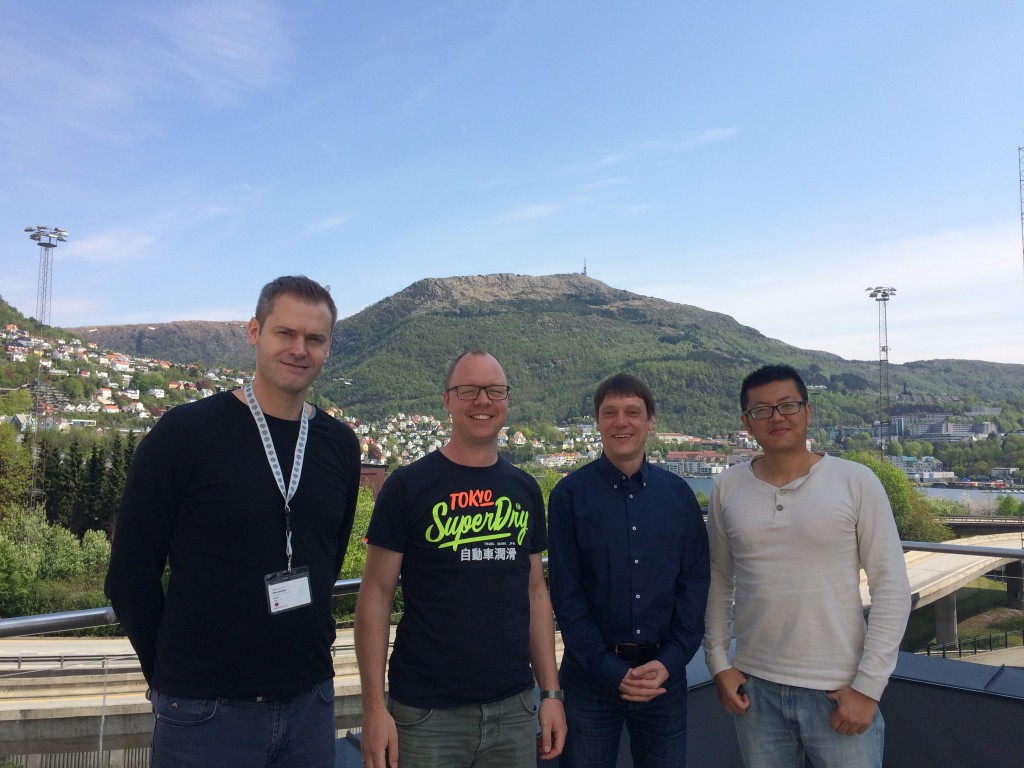
On the 11th and 12th May modelers from Bergen and Copenhagen have met in Bergen to discuss various aspects of coming Marine Isotope Stage 3 (MIS3) simulations with our climate models NorESM and EC-Earth, respectively. We have focused on MIS3 38,000 years ago and established the ground work for the participation of further groups in the future.
A big part of the discussion addresses the adequate selection of the global coast line and the ice sheet geometries for the Northern hemisphere. We are going to use the 14 kyrBP ice sheet geometry as a proxy for the 38 kyrBP situation, since both the global sea level and probably also the ice sheet geometry had been similar during these two periods. Furthermore no reliable estimate exists for times before the Last Glacial Maximum (LGM, 21 kyrBP) because the evidence had been overprinted by expanding ice sheet in the time leading into the LGM.
In particular two ice sheet reconstructions have been extensively evaluated: the global, so-called “ICE 6G”, product from Peltier and the estimate form Tarasov for North America. Since only Peltier provides estimate for areas beyond North America, it will be used for these regions. However we have to remove the likely to extensive ice cap in the Barents Sea to be consistent with various sediment cores in this region. This enables our ocean models to simulate a realistic ocean circulation on Asian continental shelf, which is deemed to be important for an adequate representation of the oceanographic conditions in the Arctic. After we get the Tarasov reconstruction data, it will be compared with Peltier’s work. It will lead to the decision if we may use Tarasov’s reconstruction in North America, since it is in accordance with glaciological principles. In general the global coast line is based on the “uplifted” bottom topography caused by the global sea level drop of 70 m.
Often we follow the spirit of the Paleo Model Intercomparison Project (PMIP) protocol, such as we apply the constructed preindustrial vegetation distribution for land points. Hence we do not eliminate any urban region or crop vegetation. Emerging land, due to the fallen sea level, is filled with the vegetation distribution that is typical for the region. A probably more zonal weighted examination may allow keeping the generally observed zonal vegetation alignment. Applied greenhouse gas concentrations are based on ice cores. Astronomical variables present the condition for 38kyr PB, while the solar constant is kept unchanged.
The meeting has been complemented with a video conference meeting with William Roberts, who has help to verify our thoughts. A draft document summarizing the discussion is available on request.